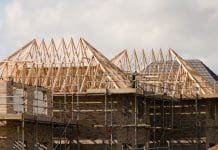It is not enough to simply build more houses; rather there should be a focus on creating quality homes. Kim Vernau, CEO of BLP Insurance explains
After weeks of delay, the government’s housing White Paper was met with a mixed reception, with the overall market sentiment being one of disappointment. This White Paper was never going to be the silver bullet to remedy a dysfunctional market overnight. Instead, it sets out a blueprint of the government’s plans; a large proportion of which will require further consultation to ensure it has the best chance of success. The main positive lies in the step change in tone from the government, moving from focussing solely on home ownership towards the inclusion of different types of tenure.
The key sectors now required to contribute to housing growth targets include housing associations and the build to rent market, supported by a diversification in the home builder market and an increased use of modern methods of construction. It’s a change in direction that is long overdue, especially in light of the challenges we currently face in housing young people, families and an ageing population.
Housing associations
One of the key sectors to benefit from the White Paper will be housing associations, now acknowledged as having a vital role to play in the provision of affordable housing. The government will urge housing associations to explore every avenue for building more homes, and they will be expected to make every effort to improve their efficiency in order to release additional resources for house building.
Social housing will also be placed on a more independent footing through the establishment of its own regulator outside of the Homes & Communities Agency. The paper also acknowledged that housing associations belong in the private sector and the required deregulatory measures will be implemented to allow them to be classified as such.
There is also a clear expectation that housing associations will be expected to back local authorities and councils to build through local development corporations, local housing companies and/or joint ventures as well as the Accelerated Construction programme.
Build to rent
The White Paper proposes changes to the National Planning Policy Framework so that local authorities know how to plan proactively for build to rent as well as making it easier for build to rent developers to provide affordable housing via affordable private rent, otherwise known as discounted market rent.
Importantly, there will also be a focus on attracting institutional investment into the sector and building more homes for private rent. Such developments can be built at a quicker pace, are more inclined to adopt modern methods of construction and can help to regenerate local economies by attracting a skilled labour force.
Diversification of the house builder market
SME builders have been on the decline since 2007, citing land, planning and finance as the major barriers to expansion. To this end, £1bn of the £3bn Home Building Fund will be targeted at SMEs, custom builders and innovators through short-term loan finance in a bid to deliver up to 25,000 new homes by 2020.
The Accelerated Construction programme will also partner with small and medium-sized firms and other development partners and contractors to support diversification. The intention being that new contractors brought in through the programme can build homes more quickly than traditional builders.
Modern methods of construction
One of the government’s key objectives is to boost productivity and innovation through encouraging modern methods of construction in house building. These methods of construction will be eligible to access the Accelerated Construction programme as well as the Home Builders Fund.
The government have also proposed a joint working group with lenders, valuers and the industry to enable mortgages to be provided across a range of tested methods of construction. The Build Offsite Property Assurance Scheme (BOPAS) has a key role to play in this consultation. The government has also requested a consultation to consider how the planning system is working for modern methods of construction.
But where is the focus on quality?
References are made in the report to ensuring that new homes are built to a good standard and that they are energy efficient, accessible, sustainable and secure. Yet there is no indication in the paper as to what a good standard may be. Nor is any focus placed on how to ensure the quality of build across all tenures given the pressures on the housing market.
The quality of build is crucial regarding the anticipated life of the build and the costs of maintenance over that period. Build quality is likely to be directly affected by increases in the costs of building materials since June 2016, further compounded by the construction skills shortage pushing up hourly rates. Many contractors operate to fixed price contracts, and where the profit margin on those contracts is eroded through increased costs, the focus on quality can easily become of secondary importance.
The government has confirmed that it will take steps to address the skills shortage. It intends to grow the construction workforce through strong industry leadership, as well as a clear focus on improving retention and ensuring that training courses cover the right skills to the right standards. However, there also needs to be a cohesive approach to quality across the industry; from developers and contractors taking pride in the job, warranty providers checking workmanship on site, and building control taking the lead on health and safety standards. It’s disappointing that such an approach was not referenced in the White Paper as a matter for consultation, particularly given the findings of the APPG report last June titled “More Homes, Fewer Complaints”.
The quality of build is a crucial requirement for all tenures identified in the White Paper. Significant steps are being taken to improve the image of construction and to encourage more people into the industry, but quality is being ignored at our peril.
Kim Vernau
Chief Executive Officer
BLP Insurance
kim.vernau@blpinsurance.com













